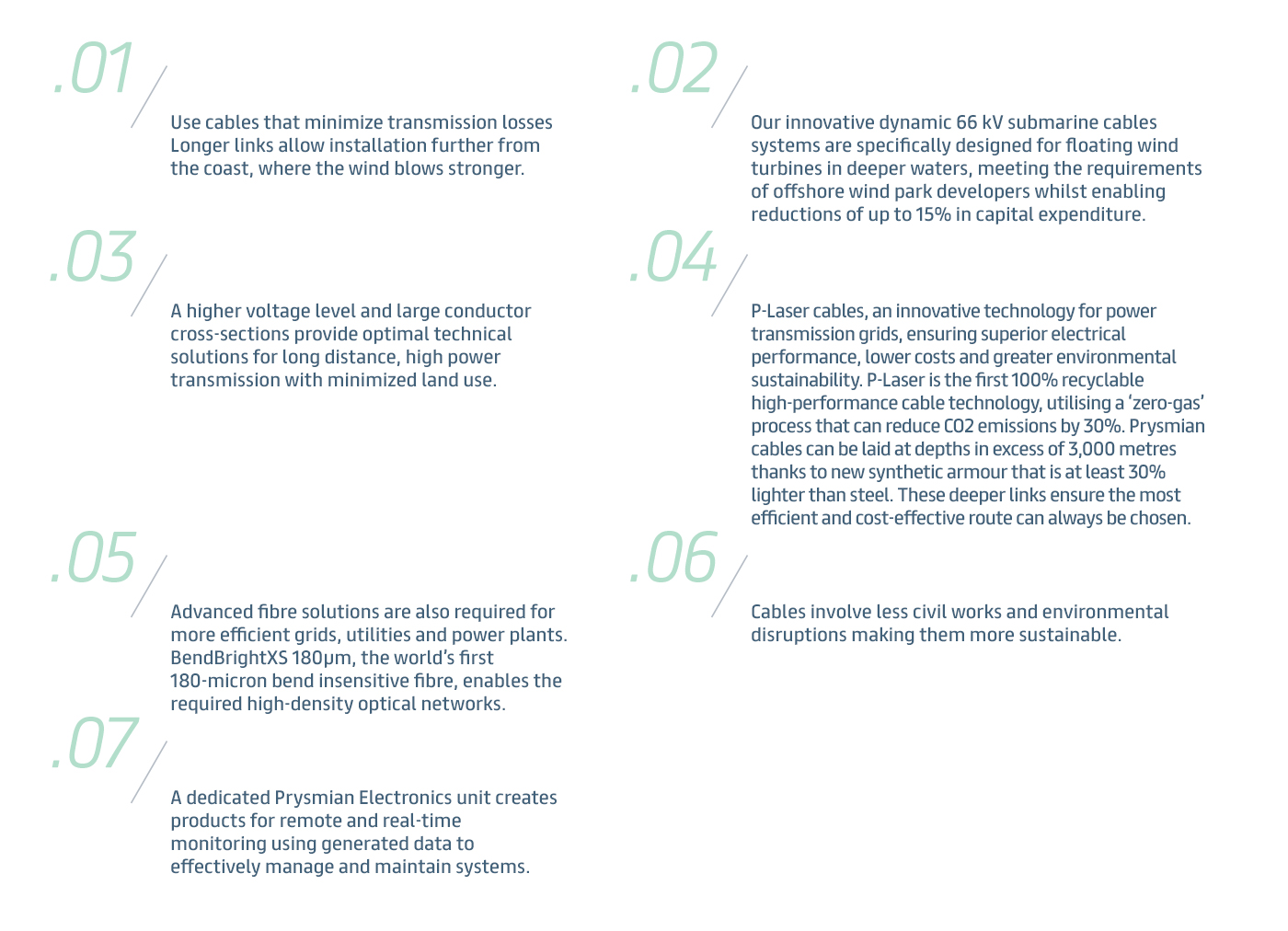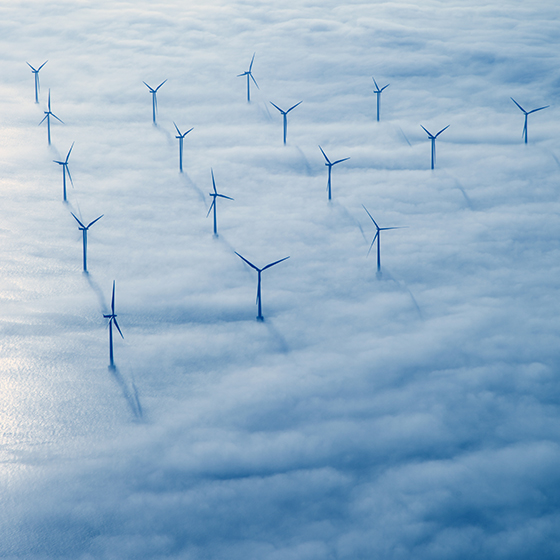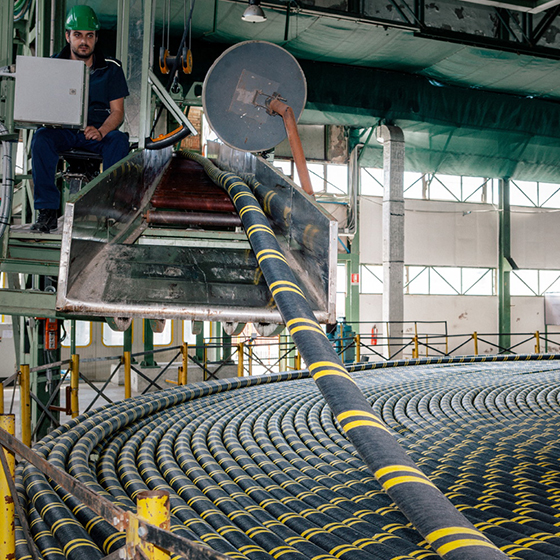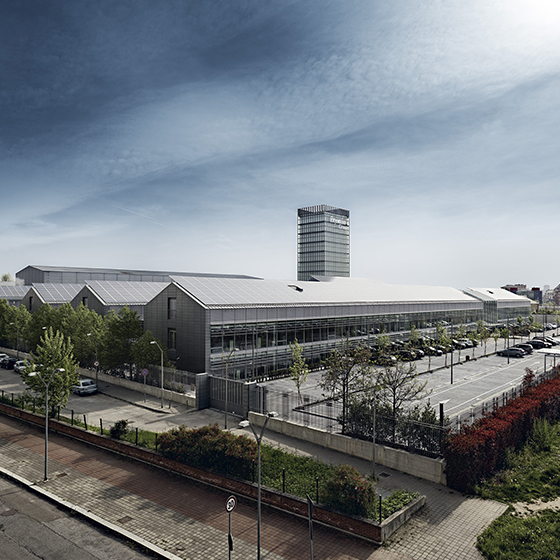How Prysmian enables the carbon neutral world helping make the Energy Transition happen

Research shows global energy demand has increased by 35% over the past 15 years and is expected to increase by 15% over the next 15 years. After that, demand may drop – although one factor underlying this assumption is an accelerating increase in energy efficiency. Today’s challenge is realising the transition from fossil fuels to renewables at the lowest cost without compromising system reliability.
The paper identifies five key decarbonisation technologies to reduce energy-related carbon emissions: use of renewables, electric vehicles, hydrogen, carbon capture and storage, and biofuels.
A recent Morgan Stanley white paper states: “Decarbonising the production of electricity is the largest opportunity for carbon emission reductions, with a quarter of global emissions released by the power sector.”
Let’s take closer look at renewables. Since 2000, 2,600 GW of renewable generation capacity has been installed worldwide. In 2019, renewables accounted for 37% of global power generation - up significantly from 25% in 2000. Strong continued growth is expected over the next decade - but limiting global warming to 2°C will require 12,000 GW of additional renewable capacity and $14 trillion of investment by 2050. According to DNV GL’s energy supply forecast, the share of renewables will increase dramatically as fossil sources decline. For wind, the outlook is particularly good, as the business case continues to become more attractive across emerging and incumbent markets.
Additionally, significant investment in power grids is needed, as these were not built with renewables in mind. Integration of offshore wind and other renewable sources requires a considerably stronger overlay transmission network as well as optimisation of assets, for example through network digitalization and condition monitoring. A successful energy transition will largely depend on the rollout of smart grids, developments in energy storage and production from renewable sources such as wind, solar and tidal energy. Natural gas is expected to act as a bridge fuel.
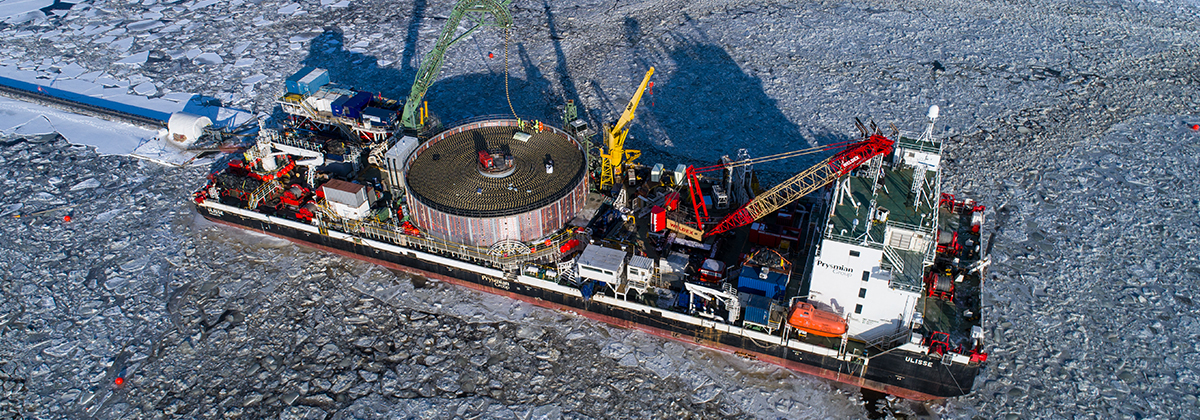
What support can Prysmian offer in these areas?
To enable a successful energy transition, 450 GW of offshore wind energy will be required by 2050 in Europe alone, significantly more than today’s installed 205 GW. Taking wind power networks to the next level requires expertise in laying submarine and on-shore networks, ultra-efficient cabling to bring power to shore, and robust interconnectors linking everything from islands to continents. Prysmian has a proven track record in these areas.
Submarine power cables are now among the most important key enablers for the energy transition. Our sizeable R&D investments have resulted in cables that can help cut emissions whilst lowering the cost per megawatt. There are several ways to achieve these goals.
